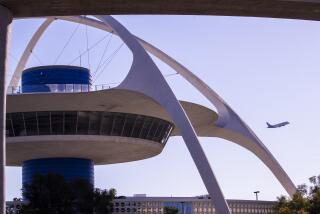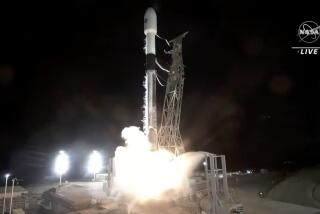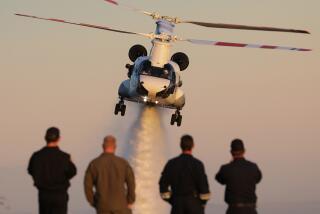ENVIRONMENT : Serenity vs. Safety as FAA OKs More Grand Canyon Flights
- Share via
FLAGSTAFF, Ariz. — Five years after the establishment of a federal law designed to limit flights over the Grand Canyon, controversy remains over whether the Federal Aviation Administration is permitting too many flights.
Sharp criticism of the FAA’s actions has come from both a regional conservation group and the park superintendent.
Representatives of the Grand Canyon Trust last month accused the FAA of showing “capricious” disregard for the National Parks Overflights Act.
“Without consulting the National Park Service or inviting public comment or review under the National Environmental Policy Act,” wrote trust official Roger Clark, “the FAA has arbitrarily revised federal regulations in a (way) that will have significant environmental impact on the Grand Canyon National Park.”
The FAA rejects the criticism, saying it has no responsibility to consult with the Park Service. Robert Trout, the FAA’s geographic unit supervisor in Las Vegas, said safety is his main concern: “We don’t want airplanes running into each other.”
BACKGROUND: Over the past 12 years, 55 people have died in a total of four airplane or helicopter crashes over or near the canyon.
In the mid-1980s, Congress found that “noise associated with aircraft overflights is causing a significant adverse effect on the natural quiet and experience of the park.” The resulting National Parks Overflights Act specified flight-free zones over certain areas to preserve the “natural quiet” of the canyon.
But since the passage of the law in 1987, flights have nearly doubled. More than 160,000 aircraft take off and land each year at Grand Canyon Airport, which is now Arizona’s busiest commuter field.
Last summer, as part of a study mandated by Congress, park personnel surveyed aircraft over various park corridors. During peak periods at some places, said Grand Canyon Park Supt. Robert Chandler, park workers counted a helicopter or airplane overhead every two minutes.
“We are especially worried that aviation safety may be compromised when . . . aircraft fly within a few hundred feet of the park’s primary heliport and helicopter operations area,” Chandler wrote in an August letter to the trust.
DEBATE: Aside from the primary dispute over whether the FAA needs to consult with the Park Service over flight routes, there are also differences of opinion over proposed flights to the more remote North Rim.
By road, the South Rim is about 80 miles from Flagstaff, and the less-developed North Rim about twice that, including more rugged travel. The main road to the North Rim is closed to most vehicles during the winter.
“Traveling to the North Rim during the winter via helicopter is just one more way of experiencing the Grand Canyon,” said Joy Staveley, co-owner of Kaibab Lodge at the North Rim, from which she and her husband operate a small cross-country ski operation. New rim-to-rim flights would carry cross-country skiers to the lodge.
Chandler strongly objects.
“We believe that rim-to-rim flights are contrary to the philosophy that the North Rim provide a more pristine experience to the visitor than the South Rim,” he said. The North Rim’s isolation “is part of the reason the public visits that location.”
OUTLOOK: The flight debate is far from over.
“The job is not finished,” said Sen. John McCain (R-Ariz.), a strong advocate for park tranquillity. “Demand for air space increases each year. We must continue the work we began” with the 1987 overflights act.
Chandler acknowledges safety concerns but adds, “The law . . . mandates that we must find ways to restore the natural quiet” of the park.
Trout maintains that the FAA is adhering to the 1987 act.
“We’re not in violation, not one bit,” he said. “There are 1 million people who want to fly over the canyon, while the (few people) who go out there and actively hike these flight-free zone areas are a drop in the bucket.”
More to Read
Sign up for Essential California
The most important California stories and recommendations in your inbox every morning.
You may occasionally receive promotional content from the Los Angeles Times.










